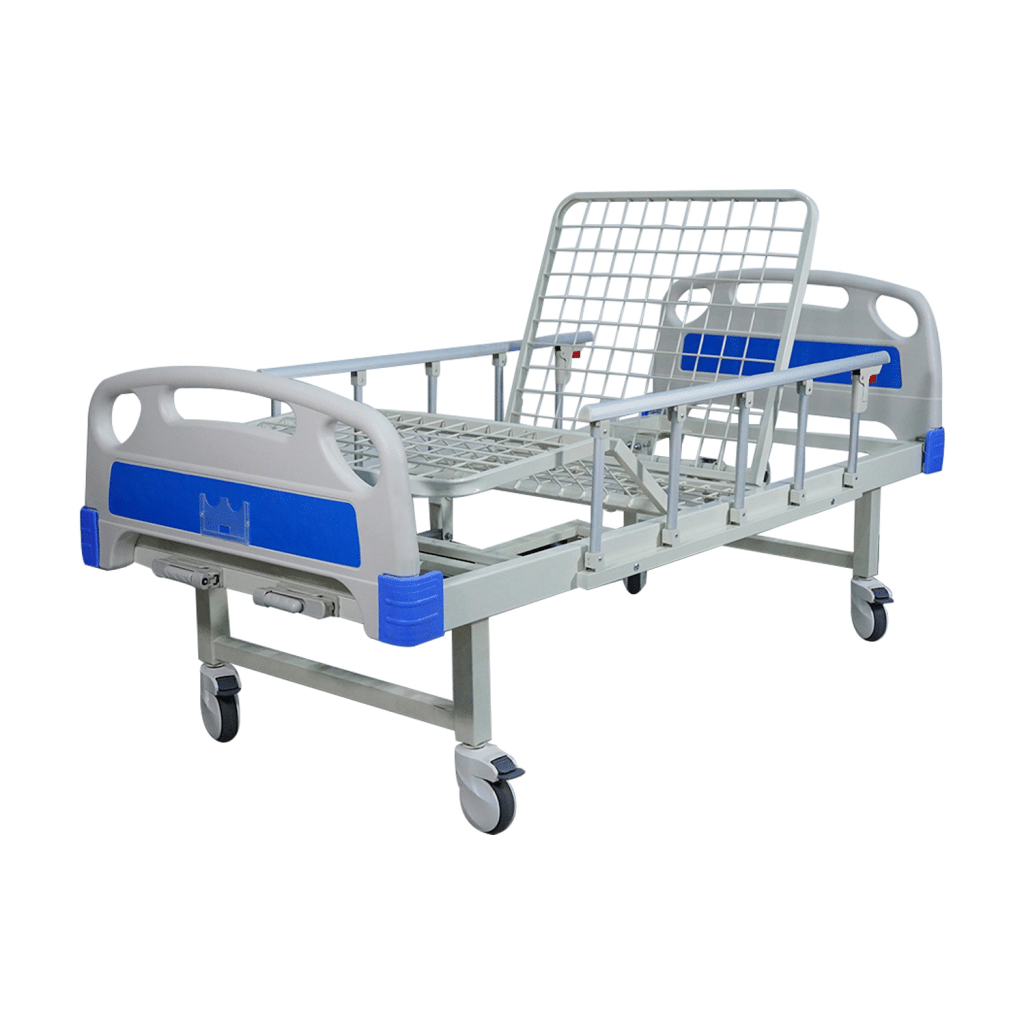When healthcare facilities need reliable and affordable patient beds, manual hospital beds remain one of the most practical and cost-effective choices. Their simplicity, durability, and low maintenance requirements make them ideal for hospitals, clinics, emergency centers, and even long-term home care. Because of this consistent demand, choosing the right manual hospital bed suppliers becomes a very important decision for any medical institution.
Why Manual Hospital Beds Are Still in High Demand
Although electric and fully automated beds are becoming more common, manual hospital beds continue to be widely used for several reasons. First, they do not rely on electricity, making them dependable even in locations with unstable power. Second, they are cost-effective, allowing hospitals to purchase more units within the same budget. Third, their mechanical crank systems are easy to repair and maintain, which reduces long-term costs.
For rural clinics, developing regions, or small private hospitals, manual beds offer everything necessary for safe patient handling without the added complexity of electric controls.
What to Expect from Professional Manual Hospital Bed Suppliers
When evaluating manual hospital bed suppliers, it’s important to check certain features and standards to ensure you are getting durable and long-lasting equipment. A professional supplier should offer:
1. Multiple Bed Configurations
High-quality suppliers usually provide options such as:
- One-crank beds: Basic backrest adjustment.
- Two-crank beds: Backrest and leg adjustment.
- Three-crank beds: Backrest, leg, and height adjustment.
These options help healthcare providers choose beds that match their patient care needs.
2. Strong and Durable Construction
A reliable manual bed should have:
- A heavy-duty steel frame
- Powder-coated or anti-rust finish
- ABS or metal head and foot boards
- Smooth crank operation
- Reinforced side rails for patient safety
A good supplier will always highlight frame strength, weight capacity, and material durability.
3. Safety and Comfort Features
Modern manual beds also include features such as:
- Lockable castor wheels
- High-density mattress support
- Adjustable side rails
- Smooth turning mechanism
- Easy-to-clean surfaces
Suppliers who focus on patient safety will always provide beds with secure locking systems and stable construction.
4. Certifications and Quality Standards
The best manual hospital bed suppliers follow proper medical equipment standards, ensuring their products are safe for patient use. Buyers should look for suppliers who follow recognized manufacturing guidelines and maintain consistent quality across all models.
Benefits of Working with Trusted Manual Hospital Bed Suppliers
Choosing a reputable supplier brings long-term advantages:
Consistent Product Quality
Reliable suppliers maintain strict quality control, ensuring every bed is durable and mechanically stable.
After-Sales Support
This includes spare parts availability, maintenance guidance, and long-term customer support for repairs or replacements.
Customization Options
Many suppliers offer customized designs depending on hospital needs, such as special side rails, upgraded crank systems, or reinforced frameworks.
Bulk Purchasing Advantages
Hospitals purchasing multiple units often receive better pricing, faster manufacturing timelines, and periodic discounts.
Where Manual Hospital Beds Are Commonly Used
Because of their versatility and strength, manual hospital beds are used in various environments, including:
- Government and private hospitals
- Emergency wards
- General patient rooms
- Long-term care centers
- Rehabilitation facilities
- Home nursing and elderly care
Their sturdy design makes them suitable for all types of medical care.
How to Choose the Right Manual Hospital Bed Supplier
When selecting from different manual hospital bed suppliers, keep the following points in mind:
1. Compare the Quality of Materials
Thick steel, high-quality cranks, and ABS components ensure long-term durability.
2. Check Bed Functionality
The more crank functions available, the more flexibility you get in patient positioning.
3. Evaluate Price vs. Value
Cheapest is not always best. Look for the best balance between strength, features, and long-term maintenance.
4. Ask About Warranty and Parts Availability
Trustworthy suppliers always offer warranties and readily available spare parts for cranks, wheels, and side rails.
5. Look for Stable and Smooth Crank Mechanisms
A stable operating system ensures nurses and caregivers can adjust the bed without difficulty.
The Importance of Reliable Suppliers in Healthcare
Healthcare facilities must focus on safety, hygiene, and comfort when choosing patient equipment. Beds are used daily and must withstand continuous use without failure. This is why selecting dependable manual hospital bed suppliers is essential. Good suppliers ensure that every product is built to last, supports proper patient positioning, and contributes to a safe medical environment.
Final Thoughts
Manual hospital beds continue to play an essential role in patient care worldwide. Their mechanical simplicity, cost-effectiveness, and durability make them a preferred choice in thousands of hospitals and clinics. By choosing reputable manual hospital bed suppliers, healthcare providers can ensure they receive long-lasting, safe, and reliable beds built to support patient recovery and medical efficiency.
If you need, I can also write product descriptions, category pages, or more articles based on this topic — just tell me!
